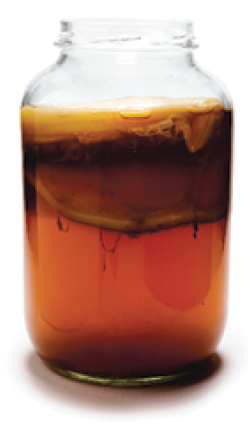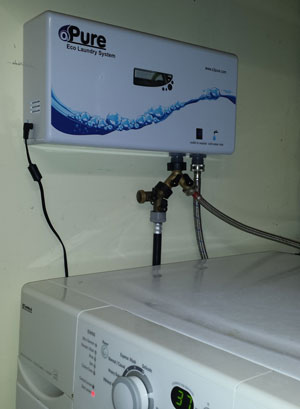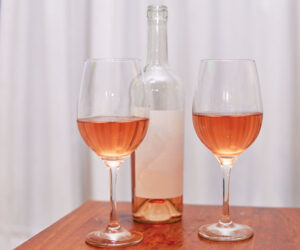Q
In my continuing quest to consume and produce fermented beverages, I have become interested in fermenting Kombucha tea. My research indicates that the SCOBY (Symbiotic Colony of Bacteria and Yeast) used in the production of Kombucha contains Brettanomyces. What is the possibility of this contaminating my wine? Is Brett probably in the air anyway, or is the risk not worth it?
Doug Overman
Cayucos, California
A
Just like I would not let a buddy of mine do any Brettanomyces beer-brewing experiments in my winery, so should you not do Kombucha and wine together in your kitchen (or garage) winery. Brettanomyces is a classic wine “spoilage” yeast responsible for a host of off aromas, often described as “barnyard” and “Band-Aid.” In addition, these yeast, which can happily exist on traditional “non fermentable” sugars like pentoses from barrels and cardboard, are notoriously difficult to get rid of once they gain a foothold. They can start living in your drains, on wooden pallets and even your stock of paper wine labels. Yes, Brettanomyces is often an ambient microbe in the air we breathe, but that’s no reason to go inviting concentrated and healthy stocks of it into your cellar.
That being said, if you have a large property and can be sure you are using separate facilities and equipment for each fermentative endeavor, you will have less of a problem and it might be worth a try. However, just by walking from one building to another you will be cross-pollinating one group with another. One solution would be to see if you could do the Kombucha over at a friend’s house . . . and wash your hands well after hanging out in their kitchen!
Q
I recently read an article about how “natural” wines don’t cause hangovers (“The No Hang-over Wine” by Jordan Salcito from the news/ opinion website The Daily Beast). Is this true?
Lindsay McKenna
Los Gatos, California
A
I just read the article you refer to, which seems to claim that “natural wine” (an ill-defined term, which in the article seems to mean “minimal sulfites added except at bottling” or “wine made from grapes, yeast and little else” — which, as an aside, defines almost all wine) doesn’t cause hangovers. The definition of “natural wine” is fodder for further articles because of the confusion (and lack of scientific, objective facts) surrounding the issue. But in our remaining column space, let me get down to the proverbial brass tacks and answer your question — is it possible there are wines out there that, because they lack certain components or weren’t “manipulated” (again, no good definition), don’t cause hangovers? Note that these are table wines with “normal” alcohol levels, i.e. 12.5% ABV and not specifically low-alcohol wines.
I forwarded the article to Dr. Linda Bisson at the Department of Viticulture & Enology at UC-Davis. She replied: “I looked at this article and have to say I think it is irresponsible to suggest that you can drink as much “natural” wine as you want and never get a hangover — the real hangovers are based completely on level of ethanol consumed, innate metabolic rates and dehydration of tissues — it has nothing to do with other components in the beverage.”
I have to admit I agree with Dr. Bisson. Even if a wine has less sulfur dioxide (or less tannin, less oak . . .), it still contains plenty of alcohol, which is what causes intoxication, dehydration and hangovers. I would hate for someone to read this article and get the impression that just by choosing certain brands over others they could blissfully ignore the fact that ethyl alcohol, whether lab-distilled so it contains no compounds other than carbon, hydrogen and oxygen (is that “pure” enough for you?) or delivered in an aqueous solution of Domain Jean-Louis Chave (one of the “natural wines” cited in the article), will still get you drunk. It’s like suggesting that because you drive a Volvo (a vehicle marketed as one of the “safest” on the road) you can blithely tear up the road at 90 miles an hour on a rainy night while texting your BFF.
Before everyone starts talking about all those suspicious sulfites and other “added ingredients” in wines that really cause the hangovers and wine headaches, let’s delve a little deeper. Sulfites are not the culprit of “wine malaise,” there is less than 0.1% of the population with a true “sulfite allergy” and these people lack the digestive enzyme sulfite dehydrogenase and also know to stay away from things like beer, dried fruits, cheese, deli meats and a host of other foods, all of which can contain sulfur dioxide. There is also no such thing as a wine free of sulfur dioxide, because yeast naturally produces 10 ppm or more sulfur dioxide as part of the fermentation process. Indeed, our own bodies are awash with sulfites. Dr. Andrew Waterhouse, a colleague of Dr. Bisson, explains, “Most studies of sulfites overlook the fact that we produce almost a gram of sulfites in our cells every day. Thus a few milligrams from a glass of wine, etc. is hardly going to overload our natural systems for breaking down the sulfite.” White wines actually tend to be fermented and bottled with more sulfites than red wines.
Dr. Bisson believes that biogenic amines are largely the culprit, saying, “Histamines are the main cause of headaches in people susceptible to such headaches, not SO2.” Ironically, biogenic amines and histamines are much more likely to be elevated in wines that are not inoculated and that have inadequate sulfur dioxide, two hallmarks of many self-proclaimed “natural wines.” Sulfur dioxide helps promote clean fermentations and its use in winemaking actually contributes to lower levels of biogenic amines and histamines.
Q
Last spring I purchased some Sauvignon Blanc juice made from Chilean grapes (Brix was 24.5, pH was 2.95, TA was 0.45, and the temperature at the time of receipt was 40 °F/4 °C). The product seemed to be in fine condition; no swelling of pails from fermentation, good smell, color etc. I allowed the juice to warm overnight to 60 °F (16 °C) and inoculated with QA23 yeast following the recommended technique of hydrating and feeding with Go-Ferm and began fermentation. Four months later, the wine was at -0.01 °Brix (still fermenting). I added Fermaid K at the recommended level and time. I even bumped the temperature to 75 °F (24 °C). Why did the fermentation take so long? I believe the grower/processor did something to retard fermentation during shipping. What would they have done? The numbers seem strange also, I usually work with fresh fruit and normally see the pH around 4 to produce a TA of 0.45 (at pH 2.95 I expected TA 0.7+). This wine doesn’t fit my past experience and I am looking for answers. I hope
you can help.
Charles Rizzo
Bensenville, Illinois
A
Hmmm, it sounds like you’ve got a little bit of sugar left there. I would start, however, with a quick check of your numbers to be sure. A °Brix of -1.0 (0.995 specific gravity) is where “dryness” starts when measuring with a hydrometer. Please make sure you are temperature-correcting your hydrometer reading. If your juice/wine is too warm, the hydrometer will sink more than it should because the wine is less dense than it would be at colder temperatures and will show an artificially high Brix reading. Hydrometers are calibrated for 68 °F (20 °C), and you will need to add or subtract to your reading when the wine’s temperature is on either side. You can find online hydrometer corrector calculators, which will also handily help you compensate for the increased alcohol level, based on your original Brix.
You should also try running a Clinitest trial, which will give you an estimate of the residual sugar you have left (to learn more about this method, check out the “Techniques” column “Measuring Residual Sugar” from the April-May 2002 issue of WineMaker). Your friendly neighborhood (or online) home winemaking supply store should be able to hook you up with the necessary goods.
Once you’ve confirmed that you actually do have residual sugar, your next question is what to do about it. Four months is far too long for a primary (sugar) fermentation to go on, and at that point I would say that your odds at re-starting it are slim. I also find that doing a re-start when residual sugar levels are that low will often just spoil the aroma and mouthfeel of the wine and so at this point I think that you should just do a sterile nominal (0.45 micron) filtration and adjust free SO2 to 30 ppm or so.
What made your fermentation stick? Stuck and sluggish fermentations are a huge topic and their possible causes have been covered many times in WineMaker magazine over the years. From the information you gave me about your situation, I think we can rule out your yeast choice. QA23 is not a nutrient hound and can ferment at some pretty cool temperatures, so I don’t think you chose poorly there. It also sounds like you did all the right things getting the fermentation the correct nutrients as well as initial fermentation conditions.
Your pH and TA numbers are a little odd, however. I agree with you, I would expect a pH of 2.95 to yield a TA much higher than 0.45. Sometimes yeast will struggle with a juice or must that is too acidic and for a white wine; I think 2.95 is pushing it a little. I like to start my Sauvignon Blancs off with a pH around 3.30 or so. Is 2.95 too tart for the yeast and is that what caused your fermentation to be incomplete? I would say probably not, but it might make the yeast cells a little “cranky.”
I wonder if, like you suggest, the supplier did something to retard fermentation during shipping. Two things come to mind: sulfur dioxide and potassium sorbate. Do you know what your starting SO2 was? It’s possible the grower added a large amount in order to retard oxidation and fermentation during shipping, and the levels were so high that it affected the health of your yeast. Add your low pH, which will make even more of the sulfur dioxide “active” and it’s possible your yeast really were feeling it. SO2 at very high levels can be inhibitory and even toxic to yeast. It’s also possible that the juice had potassium sorbate, which is a yeast inhibitor, added to it as an anti-fermentative agent before shipping. Unfortunately, sorbate does a great job at helping keep sweet wines from re-fermenting (which is its more common use in winemaking) but also can obviously prevent a healthy fermentation! In the future, I would be sure to ask more questions of your juice supplier this spring. You could also look at buying juice from someplace that will deliver it frozen. By using cold rather than chemicals, you’ll have a better chance at having happy yeast and a healthy and complete fermentation.
Q
I’ve lived in the Upper Midwest for long enough to know what grows well here (Marquette and La Crescent are two of my favorites) and what doesn’t (Vitis vinifera of any sort). However, I’ll be retiring to Albuquerque, New Mexico soon and have no clue what grows there. Ideally, some Vitis vinifera can survive the winters. It looks like 6b or 7a are the USDA zones there, which are warmer than here, but not exactly the 8s and 9s of California. I would gladly accept any suggestions you can offer about growing backyard vines in Albuquerque?
Bill Mech
Clive, Iowa
A
I’m thrilled for your new move because Albuquerque is just about as far north in New Mexico as you want to be planting traditional wine grapes of Vitis vinifera. Many grape types thrive in this drier, sunnier and often higher-altitude state, and some fabulous wines (Gruet’s amazing sparkling wines are some of the best-known) are being produced there. That being said, cold-hardy natives like Concord and Niagara do best in Northern New Mexico, whereas Albuquerque and south remain temperate enough in the winter to safely grow traditional wine grapes like Chardonnay and Cabernet Sauvignon. Like you said, it’s not a state that’s quite as temperate as California. Although you don’t have to worry about the rot and mildew problems like you do in the Midwest. Winterkill due to extreme cold remains a concern for points north of Albuquerque.
Since you’re right on that north/south zone border, I recommend you think about grapes and wine styles that are early-ripening, don’t need high sugars to produce a nice wine, and that do well in cooler or higher altitude climates. My top choices would probably be Pinot Grigio, Sauvignon Blanc, and Chardonnay for whites and Grenache, Cinsault or Pinot Noir for reds. These varietals make really approachable, delicious wines and don’t need to get to 27 °Brix or higher to make a stylish, satisfying product. Zinfandel, Barbera and Cabernet Sauvignon, on the other hand, are known for their heavier, more alcoholic profiles (at least in current winemaking and wine drinking trends), and many winemakers want to see higher sugars before picking. Cold weather and early fall storms may limit the possibility of achieving full ripeness for these kinds of grapes. In colder years I’ve been thankful to be a Pinot Noir grower with my grapes in the barn, unconcerned about the weather while my Cabernet Sauvignon-growing friends scowl at every coming rain cloud.
I recommend you do a little searching around and become friends with the local County Extension Office. The University of New Mexico’s College of Agricultural, Consumer and Environmental Sciences has a nice viticulture outreach program backed by the resources and science of an accredited educational institution. There are also a number of local groups, societies and grower’s associations to contact, get involved with and learn from, depending on your level of interest and endeavor. Check out the New Mexico Vine and Wine Society, which is an overall supportive organization of both the commercial and home enthusiast.





